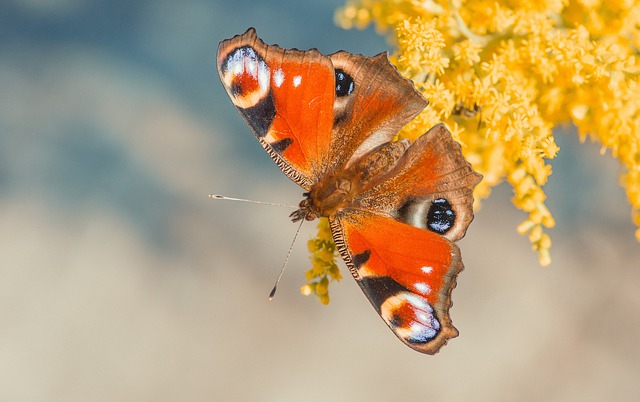
| Version | Summary | Created by | Modification | Content Size | Created at | Operation |
|---|---|---|---|---|---|---|
| 1 | Michał Filipiak | + 758 word(s) | 758 | 2020-04-10 11:54:28 | | | |
| 2 | Vicky Zhou | -9 word(s) | 749 | 2020-10-30 08:03:11 | | | | |
| 3 | Vicky Zhou | + 1 word(s) | 759 | 2020-10-30 08:04:19 | | | | |
| 4 | Catherine Yang | Meta information modification | 759 | 2020-11-05 11:23:13 | | |
Video Upload Options
Larval feeding guilds may affect pollinator ecology, evolution and diversity. I propose to evaluate the nutritional demands of pollinating insects from different larval feeding guilds and the nutrient supplies offered by their host plants/other larval food to explore the nutritional dimension of the ecology and evolution of pollinators and their host plants.
1. Rationale
Ecological interactions, evolution and the diversity of life are associated with differences in the consumption, utilization and allocation of nutrients, and selection pressures on these traits are recognized as the most common cause of life history evolution [1]. Based on their larval food, pollinating insects belong to different feeding guilds (folivores, pollinivores, sap-suckers, saprophages and predators), and they rely on variously nutritionally (un)balanced food. Therefore, the evolution, ecology and diversity of pollinating insects may be shaped by the nutritional quality of their larval food, which is used to build a fully functional adult body.
Ecological stoichiometry is an ideal framework for studying this topic [2][3][4]. Since the quantity of food that may be eaten during larval development is exact and definitive, food quality, reflected in the stoichiometric match/mismatch, limits the growth, development and fitness of organisms [2][3][4]. Only a given amount of every atom is available for allocation between traits, and particular traits may be “expensive” or “cheap” to produce. The greater the stoichiometric mismatch between the proportions of atoms building the adult body of an organism and its larval food is, the stronger the fitness-limiting effects and evolutionary tradeoffs are [5].
The organismal stoichiometry of adult insects is species specific depending on the corresponding structure, physiology and metabolism; therefore, it can be used to define the nutritional demand of an organism [3][4]. The demand may be further compared with the supply of nutrients in larval food [6]. For example, pollinivores appear to have a high demand for P, and the P concentration in pollen is as high as that in animal tissues [7]. Folivores and sap-suckers might be limited by low concentrations of N and Na in their food.
I propose to evaluate the nutritional demands of pollinating insects from different larval feeding guilds and the nutrient supplies offered by their host plants/other larval food to explore the nutritional dimension of the ecology and evolution of pollinators and their host plants.
The following hypotheses may be tested:
- The larval foods of pollinating insects in different feeding guilds differ in stoichiometry.
- Plant species differ in the stoichiometry of their offered food supply.
- Organismal stoichiometry differs among (1) various feeding guilds and (2) species of pollinating insects, indicating the existence of different nutritional demands; therefore, the scarcity of different atoms limits pollinators in a (1) “larval-feeding-guild-specific” and (2) species-specific manner.
- Pollinivores’ and predators’ bodies have the lowest molar C:P, C:other elements and N:P ratios of all the feeding guilds, which correspond to the ratios in their larval food.
One may be discuss how:
- the life histories, evolution, ecological interactions and diversity of pollinators are shaped by stoichiometrically explicit nutritional limitation experienced during larval development; and how
- floral diversity promotes pollinator diversity via variable nutritional stoichiometric niches.
2. Work Plan
To date, only C:N:P stoichiometry has been considered when establishing a link between stoichiometric phenotype and fitness [3][8]; however, more than 25 atoms are needed to build fully functioning organisms [9]. One may synthesize available data for all atoms needed to build an adult body for various taxa of insect pollinators from different larval feeding guilds (Lepidoptera, Coleoptera, Hymenoptera, Diptera, Thysanoptera, Hemiptera, Blattodea and others [10]), collembolans, their host plants and other food sources. First, one may create a literature-based database on the multielemental compositions of pollinating insects and their larval foods. One may consider bibliographic sources on insect and plant ecology, agrobiology, cultivation, nutrition and human diet supplementation published over the past ~100 years, e.g., [11], including multiple data sources published before 1985 on the multielemental compositions of organisms.
To analyze the collected data, one may apply various established protocols: (a) multivariate analyses [12] and (b) dynamic range boxes [13] to define and compare the (1) organismal stoichiometries of pollinators, i.e., their nutritional demands; (2) stoichiometries of plant resources and other larval foods, i.e., the nutritional supplies; and (3) stoichiometric niches of pollinators. A species’ stoichiometric niche may be estimated as the hypervolume covered by all specimens of the species in multidimensional/nutritional space using dynamic range boxes to allow for comparisons among taxa [13]. Protocol (c), the TSR index [6][7][14] [6,7,14], may be used to define and compare the limiting effects of food stoichiometry (stoichiometric mismatches) on pollinators feeding on various food resources and plant species.
References
- Slansky, F.; Rodriguez, J. G. Nutritional Ecology of Insects, Mites, Spiders, and Related Invertebrates; Wiley-Interscience, 1987; ISBN 047180617X, 9780471806172
- Robert Sterner; J.J. Elser; Ecological Stoichiometry: Overview. Encyclopedia of Ecology 2008, na, 1101-1116, 10.1016/b978-008045405-4.00309-8.
- A.D. Kay; T. Vrede; Evolutionary and Biochemical Aspects. Encyclopedia of Ecology 2008, na, 1472-1481, 10.1016/b978-008045405-4.00305-0.
- Adam D Kay; Isabel W. Ashton; Elena Gorokhova; Andrew J. Kerkhoff; Antonia Liess; Elena Litchman; Toward a stoichiometric framework for evolutionary biology. Oikos 2005, 109, 6-17, 10.1111/j.0030-1299.2005.14048.x.
- Michał Filipiak; A Better Understanding of Bee Nutritional Ecology Is Needed to Optimize Conservation Strategies for Wild Bees—The Application of Ecological Stoichiometry. Insects 2018, 9, 85, 10.3390/insects9030085.
- Michał Filipiak; Nutrient Dynamics in Decomposing Dead Wood in the Context of Wood Eater Requirements: The Ecological Stoichiometry of Saproxylophagous Insects. Saproxylic Insects 2018, 1, 429-469, 10.1007/978-3-319-75937-1_13.
- Michał Filipiak; Karolina Kuszewska; Michel Asselman; Bożena Denisow; Ernest Stawiarz; Michał Woyciechowski; January Weiner; Ecological stoichiometry of the honeybee: Pollen diversity and adequate species composition are needed to mitigate limitations imposed on the growth and development of bees by pollen quality. PLOS ONE 2017, 12, e0183236, 10.1371/journal.pone.0183236.
- Miguel Leal; Ole Seehausen; Blake Matthews; The Ecology and Evolution of Stoichiometric Phenotypes. Trends in Ecology & Evolution 2017, 32, 108-117, 10.1016/j.tree.2016.11.006.
- Michael Kaspari; Jennifer S. Powers; Marlene Zuk; Biogeochemistry and Geographical Ecology: Embracing All Twenty-Five Elements Required to Build Organisms. The American Naturalist 2016, 188, S62-S73, 10.1086/687576.
- Jeff Ollerton; Pollinator Diversity: Distribution, Ecological Function, and Conservation. Annual Review of Ecology, Evolution, and Systematics 2017, 48, 353-376, 10.1146/annurev-ecolsys-110316-022919.
- Pokarzhevskii, A. D. Geokhimicheskaya ekologia nazemnykh zhovotnykh. (Geochemical ecology of terrestrial animals).; Nauka: Moscow, 1985
- Smilauer, P.; Lepš, J. Multivariate Analysis of Ecological Data using CANOCO 5; Cambridge University Press: Cambridge, 2014; ISBN 9781139627061
- Robert R. Junker; Jonas Kuppler; Arne C. Bathke; Manuela L. Schreyer; Wolfgang Trutschnig; Dynamic range boxes – a robust nonparametric approach to quantify size and overlap of n ‐dimensional hypervolumes. Methods in Ecology and Evolution 2016, 7, 1503-1513, 10.1111/2041-210x.12611.
- Michał Filipiak; January Weiner; Plant–insect interactions: the role of ecological stoichiometry. Acta Agrobotanica 2017, 70, na, 10.5586/aa.1710.






